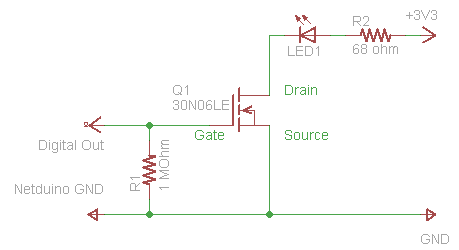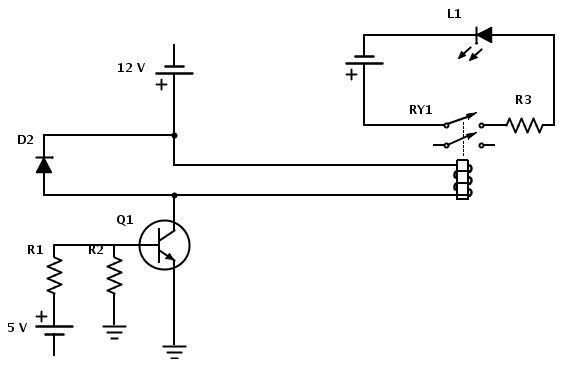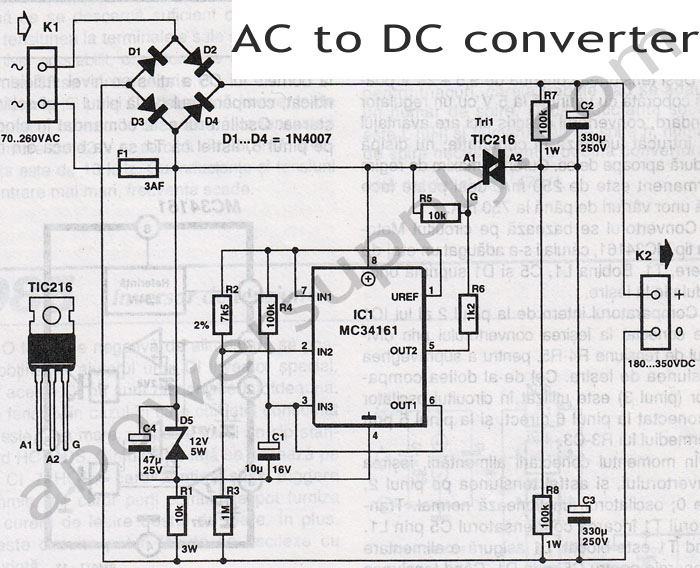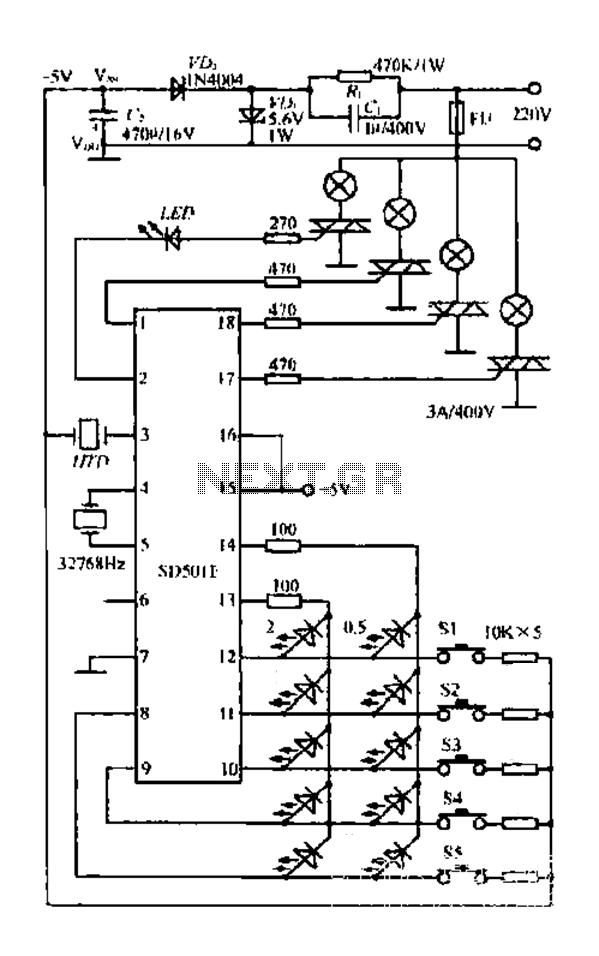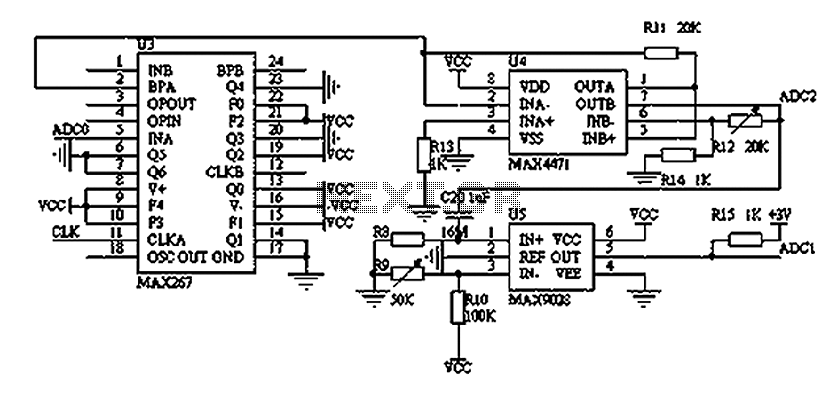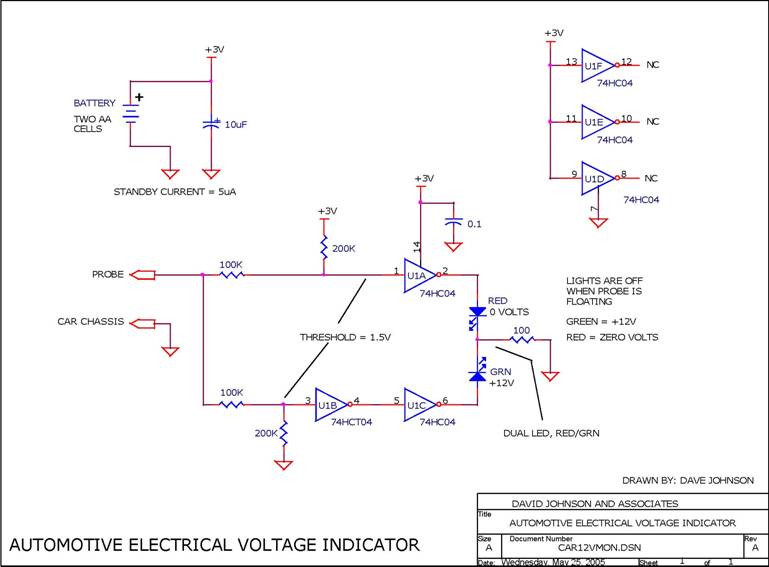
12V DC Voltage Doubler Circuit
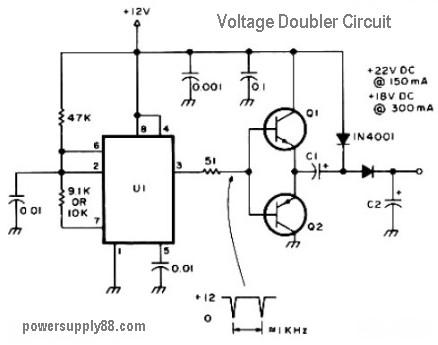
This circuit diagram represents a DC voltage doubler and DC converter. It is designed to convert a 12V DC power supply into outputs of 24V DC and 18V DC. Nearly any PNP or NPN power transistors can be utilized in this circuit.
The circuit operates by employing a configuration that doubles the input voltage through a combination of capacitors and diodes, achieving the desired output voltages. The primary components include a transformer, which is not always necessary in a simple doubler circuit, but can be used for isolation and voltage scaling. The diodes are arranged in a specific manner to allow for the rectification and regulation of the output voltages.
In the case of the 12V to 24V conversion, the circuit typically utilizes a full-wave rectifier configuration, where two diodes are used to conduct during each half-cycle of the AC waveform, effectively doubling the output voltage. Capacitors are placed in parallel to store the charge and smooth out the output, ensuring a stable DC voltage.
For the 18V output, additional regulation may be required, which could involve the use of a linear voltage regulator or a switching regulator circuit. This component would help maintain a consistent output voltage despite variations in load or input voltage.
Power transistors, whether PNP or NPN, are employed to switch the current through the circuit, allowing for efficient control of the output voltage levels. The choice of transistor will depend on the required current handling capabilities and the specific characteristics of the circuit design.
Overall, this circuit design provides a versatile solution for applications requiring multiple DC voltage levels derived from a single DC source, making it suitable for various electronic projects and systems. Proper thermal management and component ratings should be considered to ensure reliable operation under load conditions.This is the circuit diagram of DC voltage doubler / DC converter. The circuit will convert 12VDC power supply to become a 24VDC at and 18VDC. Almost any PNP or NPN power transistors should be work for this circuit. 🔗 External reference
The circuit operates by employing a configuration that doubles the input voltage through a combination of capacitors and diodes, achieving the desired output voltages. The primary components include a transformer, which is not always necessary in a simple doubler circuit, but can be used for isolation and voltage scaling. The diodes are arranged in a specific manner to allow for the rectification and regulation of the output voltages.
In the case of the 12V to 24V conversion, the circuit typically utilizes a full-wave rectifier configuration, where two diodes are used to conduct during each half-cycle of the AC waveform, effectively doubling the output voltage. Capacitors are placed in parallel to store the charge and smooth out the output, ensuring a stable DC voltage.
For the 18V output, additional regulation may be required, which could involve the use of a linear voltage regulator or a switching regulator circuit. This component would help maintain a consistent output voltage despite variations in load or input voltage.
Power transistors, whether PNP or NPN, are employed to switch the current through the circuit, allowing for efficient control of the output voltage levels. The choice of transistor will depend on the required current handling capabilities and the specific characteristics of the circuit design.
Overall, this circuit design provides a versatile solution for applications requiring multiple DC voltage levels derived from a single DC source, making it suitable for various electronic projects and systems. Proper thermal management and component ratings should be considered to ensure reliable operation under load conditions.This is the circuit diagram of DC voltage doubler / DC converter. The circuit will convert 12VDC power supply to become a 24VDC at and 18VDC. Almost any PNP or NPN power transistors should be work for this circuit. 🔗 External reference
